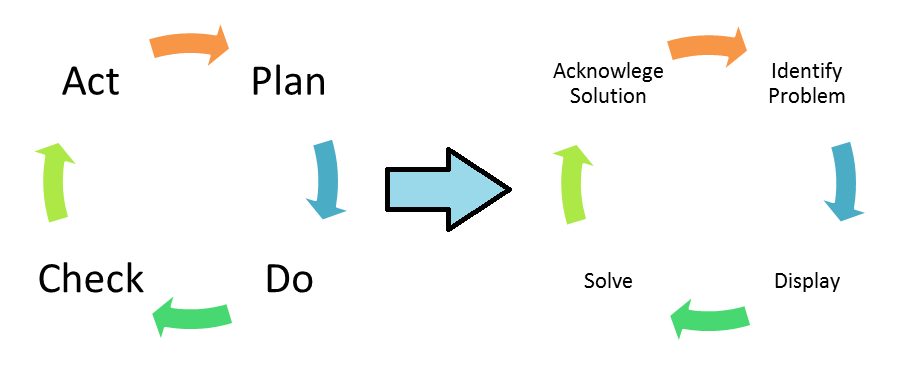Kaizen is a Japanese term and finds its usage all across the world both in production and service industries. KAIZEN literally means KAI- change and ZEN-Good; which means a good change that is nothing but improvement. Over a period of time this term has been referred to for Continuous Improvement.
The benefits of KAIZEN implementation are:
- Process Standardization
- Waste Reduction
- Innovative strategies being evolved
- Monetary benefits
KAIZEN has been popularly practiced at Toyota and its usage in Toyota Production System is well known. When we talk about change or improvement, it definitely needs to follow some basic rules which will help an organization to reap the benefits. KAIZEN adopts the Shewhart cycle/Deming’s cycle. As we follow the PDCA cycle it automatically follows continuous improvement cycles.
When, why and how is Kaizen implemented in a system?
KAIZEN is implemented in an organization which strives to standardize and keep improving on its existing process (either small/large). KAIZEN should be always an existing process and not practiced in ad-hoc basis as its philosophy is based on continuous improvement.
Now one might wonder who can take part in KAIZEN activities and how it can find its way to success. KAIZEN is also referred to as GEMBA KAIZEN in some instances. GEMBA means Workplace and hence indicates the process of going to shop floor to identify the improvement opportunities from the ground level workers and firsthand experience of the floor. People who are handling the process day in and out know the opportunities better than anyone else. Each and every suggestion does not compulsorily indicate improvement and hence the suggestions should be assessed for risks, cost involved and the benefits that can be reaped. The analysis would suggest whether the idea can be implemented or not. If an idea can be implemented after slight modification the same should be shared, consulted with the idea contributor.
KAIZEN can also be triggered by highlighting specific problems or goal achievement points for which people at all levels can contribute with clear role definition for people who should be accessing and involved in idea implementation. If the assessment and implementation roles are not defined initially the ideas may still and not reap the intended benefits. In the second way time lines should be defined for assessment and implementation of the suggestions.
KAIZEN finds its usage in Six Sigma, TPS, 5S, LEAN and other improvement strategies purely for its benefits, employee involvement, simplicity and huge success creation.

